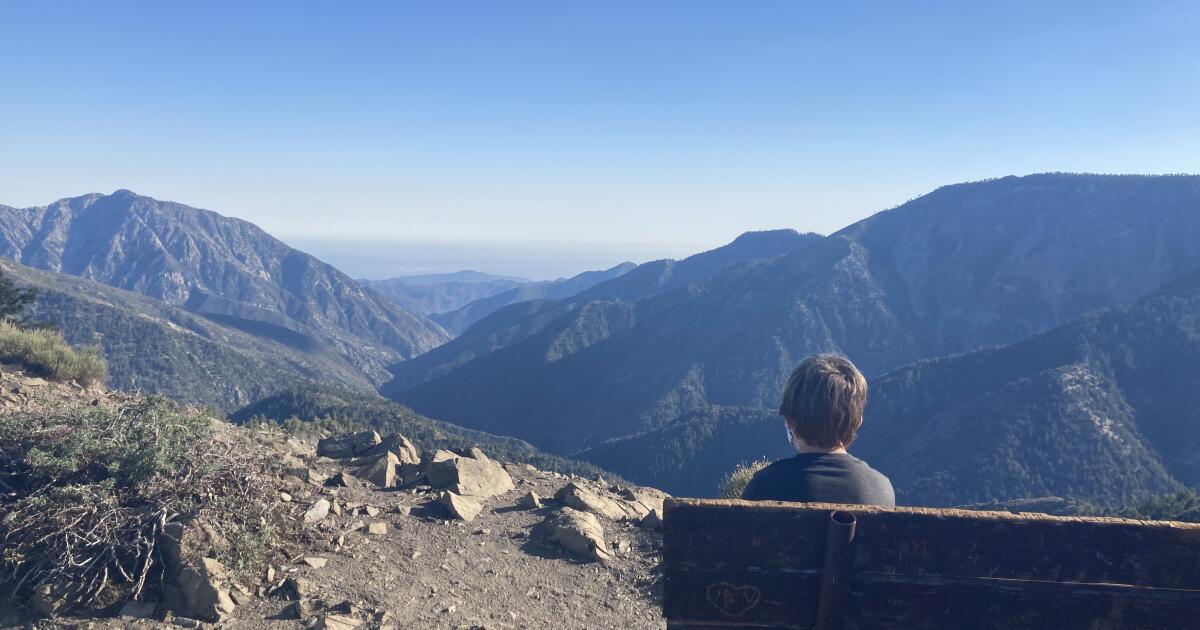Each hiker in Los Angeles is aware of that sinking feeling.
You stare on the mountains (as a result of that’s what we do when now we have a second) and see a darkish column of smoke. Virtually immediately you will have a good suggestion of which trails is perhaps burning and, relying on if it’s scorching, dry and the proper time of yr, whether or not the fireplace will ultimately attain your spot.
In 2020, the Bobcat fireplace blowtorched a number of of my household’s beloved spots within the Angeles Nationwide Forest. Now, 4 years later, the 55,000-acre Bridge fireplace is taking out a number of of our remaining L.A.-adjacent mountain retreats, upending lives in forest communities resembling Wrightwood and imperiling mountain lions, bears, bighorn sheep, frogs and different wildlife.
To name this heartbreaking grossly understates the loss. Think about if an earthquake worn out Disneyland or Dodger Stadium — devastating, sure, and fortunately rebuildable. However when a mountain forest burns within the form of excessive fires of late, nature in all probability gained’t rebuild it in my lifetime. That the majority of those disasters have preventable human causes makes the loss obscene.
Human causes? Although local weather change will get the eye, easy human recklessness or malice typically lights the primary spark, then drought and excessive warmth take over.
Investigators haven’t decided what began the Bridge fireplace. However, police arrested an arson suspect in reference to the Line fireplace within the San Bernardino Mountains (39,000 acres), and the Airport fireplace in Orange County (24,000 acres) was sparked by a public works crew shifting boulders with heavy equipment.
Different main fires have had extra innocuous origins. In 2018, the Carr fireplace close to Redding burned greater than 1,000 constructions and an space of forest roughly the dimensions of town of San Diego, killing eight individuals. That fireplace began on Nationwide Park Service land after a driver’s trailer had a flat tire, inflicting a rim to scrape the highway and shoot sparks into tinder-dry brush.
There’s no argument: People current the clearest and most current fireplace hazard to wildlands. And within the L.A. space, roughly 18 million of us stay close to greater than 2 million acres of government-managed forests.
So right here’s what the U.S. Forest Service, the Nationwide Park Service and California State Parks should do when circumstances are predictably ripe for cataclysmic fireplace: Shut their forests.
When a significant warmth wave bears down on us — as one did earlier than all of the fires burning round us now, and earlier than the Bobcat fireplace in 2020, and earlier than the Carr fireplace in 2018 — inform drivers, hikers, hunters and everybody else trying to the mountains for aid: Don’t come right here, as a result of it’s too harmful, and we don’t need you beginning one other fireplace.
This wouldn’t be with out precedent. Simply earlier than Labor Day weekend in 2021, the Forest Service briefly closed almost all of its land in California. Although the mountains round Los Angeles have been quiet on the time, the remainder of the state was experiencing its second-worst fireplace season on document — second solely to 2020, when greater than 4% of California’s complete land space burned. At a time of maximum hazard, the Forest Service wished to make sure sources could possibly be used combating fires fairly than evacuating guests.
For Southern California and different locations spared one other yr of disaster, the closure was preventive. The Forest Service mentioned as a lot when it introduced its order: “The closure order can even lower the potential for brand spanking new fireplace begins at a time of extraordinarily restricted firefighting sources.”
I don’t advocate such preemption flippantly. Entry to public lands is soul meals for outdoor-minded metropolis dwellers like me, to not point out the proper of each American. That we in Los Angeles have a lot accessible wilderness in our yard is an immense privilege.
Nor do I imagine this may forestall each fireplace, and even most fires. The Line fireplace in San Bernardino County has burned largely Forest Service land, however investigators imagine an arsonist began it in an adjoining suburb. Energy strains and lightning strikes have additionally wreaked havoc on our forests.
However managing entry to forests must replicate the fact of local weather change. That features telling individuals to remain out for every week or two when the foliage is bone-dry and one other hellish warmth wave seems within the climate forecast. We’ve lengthy had the instruments to foretell the circumstances for excessive fireplace risks; it’s a disgrace to not use these instruments to raised defend our struggling forests from us, and our lifestyle, from going up in smoke.




















